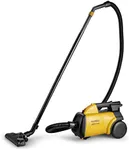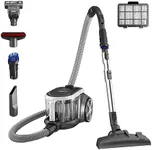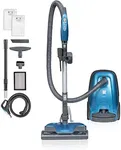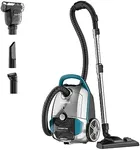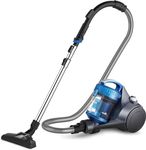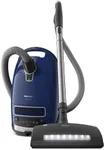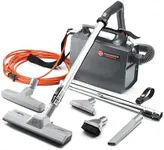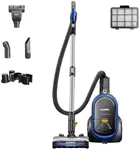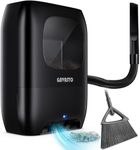Buying Guide for the Best Canister Vacuums
Choosing the right canister vacuum can make a significant difference in maintaining a clean home. Canister vacuums are known for their versatility, powerful suction, and ease of use, especially for cleaning hard-to-reach areas. When selecting a canister vacuum, it's important to consider various specifications to ensure it meets your cleaning needs and preferences. Here are some key specs to consider and how to navigate them.Suction PowerSuction power is a measure of how effectively the vacuum can pick up dirt and debris. This is important because higher suction power means better cleaning performance, especially on carpets and rugs. Suction power is often measured in watts or air watts. For light cleaning tasks or hard floors, a lower suction power (around 200-300 air watts) may suffice. For homes with pets, carpets, or heavy dirt, look for higher suction power (above 300 air watts). Consider your cleaning needs and the types of surfaces in your home to determine the right suction power for you.
Filtration SystemThe filtration system in a canister vacuum determines how well it can trap dust, allergens, and other particles. This is crucial for maintaining indoor air quality, especially for allergy sufferers. Common types of filters include HEPA (High-Efficiency Particulate Air) filters, which can trap 99.97% of particles as small as 0.3 microns. If you have allergies or asthma, opt for a vacuum with a HEPA filter. For general use, a standard filter may be sufficient, but ensure it is easy to clean or replace.
Weight and ManeuverabilityWeight and maneuverability affect how easy it is to use the vacuum, especially if you need to carry it up and down stairs or move it around furniture. Lighter vacuums (under 10 pounds) are easier to handle and store, making them ideal for smaller homes or apartments. Heavier models (over 15 pounds) may offer more power and larger dust capacities but can be cumbersome to move. Consider your physical strength and the layout of your home when choosing the weight and maneuverability of your vacuum.
Dust CapacityDust capacity refers to the amount of dirt and debris the vacuum can hold before needing to be emptied. This is important for convenience and efficiency, as larger capacities mean less frequent emptying. Dust capacities can range from 1 to 4 liters. For smaller homes or light cleaning, a smaller capacity (1-2 liters) may be sufficient. For larger homes or heavy-duty cleaning, look for a vacuum with a larger capacity (3-4 liters) to reduce the frequency of emptying the dust container.
Noise LevelNoise level is measured in decibels (dB) and indicates how loud the vacuum will be during operation. This is important for comfort, especially if you have young children, pets, or sensitive hearing. Quieter vacuums typically operate at around 60-65 dB, while louder models can exceed 70 dB. If noise is a concern, look for vacuums with lower decibel ratings. For those who don't mind a bit of noise, this spec may be less critical.
Attachments and AccessoriesAttachments and accessories enhance the versatility of the vacuum, allowing you to clean different surfaces and hard-to-reach areas. Common attachments include crevice tools, upholstery brushes, and dusting brushes. Some vacuums also come with specialized pet hair tools or motorized brush heads. Consider the types of surfaces and areas you need to clean when evaluating the available attachments. If you have pets, look for models with pet-specific tools. For general cleaning, a basic set of attachments may be sufficient.
Cord Length and RetractabilityCord length determines how far you can move the vacuum without needing to switch power outlets. This is important for convenience, especially in larger homes. Cord lengths typically range from 15 to 30 feet. Longer cords (25-30 feet) are ideal for larger spaces, while shorter cords (15-20 feet) may be sufficient for smaller areas. Retractable cords add convenience by allowing you to easily store the cord when not in use. Consider the size of your home and your preference for cord management when choosing the cord length and retractability.
